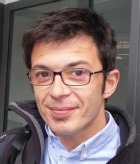In depth
Conflict journalism. Time, place and circumstances

Alberto Arce
The city of Misrata in Libya has been besieged and isolated from the rest of the country for the last two months. The only feasible entrance is by sea, through the port. Since the siege began in late February, four ships have maintained the supplies of arms and food that the rebels and the population need to maintain their military positions and keep the population alive.
So if a foreign journalist wants to enter the city to report on the situation, they must first take into account the fact that access is relatively complex, calculate the time they can spend on the story and the media space they will obtain in exchange for deciding whether it is feasible, first, and profitable, later. They must also take into account the independent variable. Two photographers have been killed and a French blogger seriously wounded since the battle in the city began.
The first variable is contact: meeting and convincing the people who hire the ships; telephone numbers, e-mails and letters of introduction; identifying oneself and convincing people who have other priorities of the importance of allowing reporters access to the area.
The second variable is patience. How much time is necessary? How long is a reasonable stay? Each passing day increases one's confidence that is based on knowledge of the place and people, including the situations of cases in which risks are taken.
The story takes shape. The place, the people, the story and its possibilities. Joining a rebel unit and going to the combat zones. Access to the front line, with total freedom, side by side with the combatants is one of the major distinguishing features of this conflict, and one of the features that makes it different from other modern conflicts.
A journalist can choose a unit of rebels and spend as much time with them as he wants, accompanying them into combat, and sleeping in their positions. He can spend as much time with them as he can afford. He can also change position every day, deciding what he wants to report.
The number of scenes that can be photographed in Misrata is enormous. We witness scenes of house to house urban combat with small arms, and the use of individual machine guns and antiaircraft guns, and attacks with RPGs. Attacks by mortar bombs and tanks and the launches of Grad rocket attacks from both sides of the battlefield. And of course the ever-present threat posed by snipers.
And of course there is what is happening in the hospitals, the situation of thousands of families taking refuge in schools or the hundreds of African workers who mill around the port waiting for a ship to flee the city. Misrata is a city under siege, with one outlet to the world, the sea, which is only accessible for few hours a week.
From a strictly professional point of view, Misrata is a challenge for any journalist who bases their working methodology on proximity. It is a unique and extraordinary experience due to the variety of aspects of armed conflict that are concentrated in a very limited area. It is a place where a war is taking place, while a revolution is being created. In an Arab country where religion is not the source of conflict and where although it may sound surprising, oil is not the only reason why they are fighting.
Misrata is a catalogue of scenarios for conflict journalism. Providing that we do not forget that it is also a place where hundreds of thousands of people are suffering and waiting for someone to give them an explanation. Because an explanation may give them some comfort.